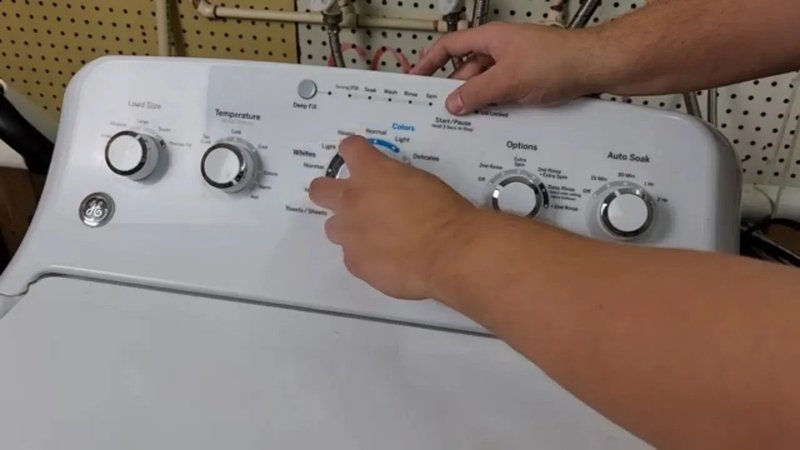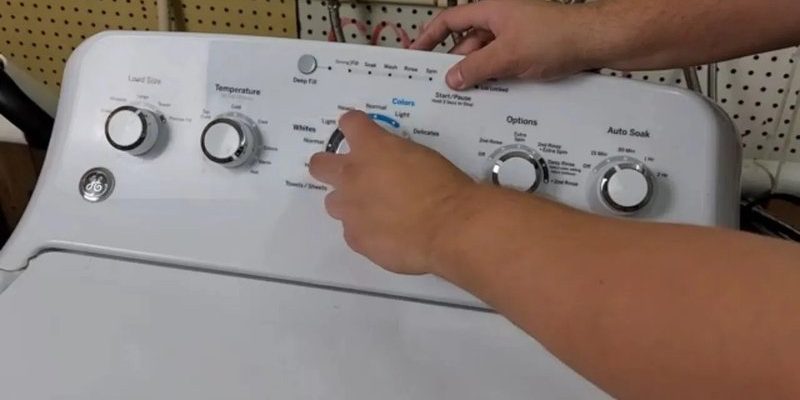
Think of it like a check engine light in your car. You might feel tempted to ignore it if the car seems to be running fine, but doing so could lead to bigger problems down the road. Similarly, ignoring the F1 error on your GE washer might seem harmless now, but it could lead to costly repairs or replacements later. Let’s break down what this error code means, why you shouldn’t ignore it, and what you can do to address it effectively.
Understanding What Error Code F1 Means
First things first: What exactly does the F1 error code mean? In the world of GE washing machines, error code F1 typically indicates a fault in the water inlet valve or a malfunction with the electronic control board. The water inlet valve is a crucial component that supplies water to your washing machine from your home’s water line, almost like the faucet that fills your bathtub. If this valve encounters issues, it can disrupt the entire process of filling water, which is essential for every wash cycle.
You might wonder why the control board is involved here. Well, think of it as the brain of your washing machine. If there’s a hiccup in communication between the control board and other components like the water inlet valve, it could manifest as an F1 error. Just like in any good conversation, if one side isn’t working properly, nothing can get done.
Recognizing the problem’s source is just the first step. It’s important to remember that while you might be able to clear the code temporarily, the underlying issue isn’t going to vanish without proper attention. So, to truly solve the problem, you’ll need to delve a bit deeper into the possible causes and remedies for the F1 code.
Diagnosing and Fixing the F1 Error
Okay, now that you’ve got a basic understanding of what F1 means, how do you go about fixing it? Let’s start with diagnosing the situation. Remember, troubleshooting is a bit like being a detective; it requires patience and a keen eye for detail. Start by checking the water supply. Make sure that the water line to your washing machine is not kinked or blocked. It sounds simple, but sometimes the solution is as straightforward as ensuring the water is on and flowing correctly.
If the water supply checks out, the next step is to inspect the water inlet valve itself. This component can sometimes get clogged with mineral deposits, much like a clogged filter in your coffee maker. In such cases, cleaning or replacing the valve might be necessary. Be sure to unplug the machine before attempting any repairs to avoid electrical shock.
If the valve isn’t the issue, you might be dealing with a faulty control board. This is a bit more complex, and you might want to call in a professional. Attempting to fix the control board on your own is a bit like trying to reprogram your smartphone without any tech knowledge—best left to the experts.
Why Ignoring the Error Isn’t Worth It
You might be asking, “What’s the worst that could happen if I ignore the F1 error?” Ignoring the error code could lead to persistent problems, potentially escalating to more severe issues like flooding due to continuous water intake or even complete machine breakdown. Imagine trying to wash clothes in a machine that won’t fill or, worse, overflows—it’s not a fun scenario!
Furthermore, ongoing use of a malfunctioning washing machine could cause wear and tear on other components, which might not be evident immediately but could shorten the machine’s lifespan. In the long run, ignoring the problem could cost you more in repairs or even necessitate buying a new machine—something we’d all like to avoid.
The best course of action is to address the issue head-on. Not only will this keep your laundry routine running smoothly, but it will also prolong the life of your GE washing machine, saving you time, money, and stress in the future.
Preventative Tips to Avoid Future Errors
So, how can you prevent the F1 error from rearing its ugly head again? Regular maintenance is key. Just like you’d schedule regular oil changes for your car, it’s wise to periodically check the components of your washing machine. Ensure that the hoses and valves are clean and free of mineral build-up, especially if you live in an area with hard water.
Keep an eye on your washing machine’s performance. If you notice anything unusual, whether it’s the time it takes to fill up or odd noises during a cycle, don’t wait for an error code to appear. Addressing minor issues before they become major problems is always a smart move.
Lastly, consider consulting your user manual or a professional for advice on regular maintenance specific to your model. Knowledge is power, and being familiar with your washing machine’s operations can keep it running smoothly for years to come.
By being proactive, you can keep your GE washing machine in tip-top shape and avoid unwelcome surprises like the F1 error code. After all, a little maintenance goes a long way toward ensuring peace of mind and the longevity of your appliances.
